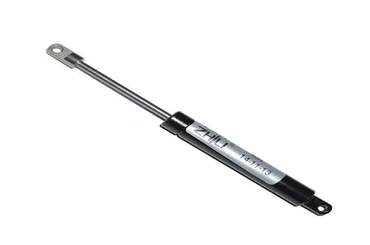If you are interested in our products ,please contact our team
Gas lift springs play a crucial role in the suspension systems of various vehicles and machines by offering support and damping to absorb shocks and vibrations.
However, due to normal wear and tear, these springs can eventually fail and result in several warning signs that suggest they need to be replaced.
This article aims to examine the various warning symptoms that indicate a gas lift spring has failed in suspension systems.
A prevalent indication of a gas lift spring failure is a drop or irregular ride height, which is typically caused by a sagging or uneven suspension system.
When the gas lift spring no longer offers the required support, the vehicle or machine may tilt to one side or have a lower ride height overall.
This can result in poor handling and potentially harm other suspension components.

Gas lift springs are frequently utilized to lift and uphold heavy components, such as hoods or trunks, on various vehicles.
When a gas lift spring is failing, it may struggle to lift these components, causing them to remain in either the open or closed position.
This can pose a hazard, as the component may suddenly fall or shut unexpectedly, resulting in injury or damage.
An indication of a gas lift spring that has failed is when there is an excessive amount of bouncing or vibration.
These springs are specifically created to soak up shocks and vibrations, however, if they are not functioning as intended, the vehicle or machine can experience too much bouncing or vibration.
This can lead to an uncomfortable ride for passengers and also have the potential to damage other parts of the suspension system.
If there is a leakage of fluid or gas in a gas lift spring, it is an evident sign that the spring has failed and requires replacement.
The leakage of fluid or gas may happen due to damage caused to the seal or piston by wear and tear.
This, in turn, can result in the loss of damping and cushioning ability of the gas lift spring.
In case the fluid or gas is not replaced, it has the potential to cause harm to other parts of the suspension system.
Therefore, it is crucial to replace the damaged gas lift spring promptly to avoid any further damage or potential harm.
When a gas lift spring fails, it can result in a suspension system that produces excessive noise.
Due to the lack of necessary support from the gas lift spring, other components in the suspension system may undergo more stress and vibration, which can cause them to produce noise.
This can result in sounds such as clunking or squeaking, which may become audible while navigating corners or going over bumps.
Therefore, if any unusual noises are coming from the suspension system, it might indicate that the gas lift spring has failed and needs to be replaced.
Gas lift springs are vital suspension system components in nearly all machines, but they can wear out over time, resulting in various warning signs, such as sagging ride height, heavy lifting issues, excessive vibration, or gas leakage.
If any of these symptoms occur, inspecting and replacing the gas lift spring is crucial to prevent damage to other components and maintain its efficiency and safety.
Upgrade your machinery's suspension system with our top-quality gas lift springs, and experience a new level of performance and comfort.
Our gas lift springs are designed to absorb shocks and vibrations, ensuring a smoother and safer operation for your machines.
Don't let worn-out suspension components compromise your productivity - invest in our gas lift springs today!